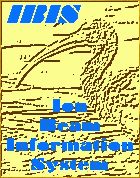 IBIS
Document Library
IBIS
Document Library  IBIS
Document Library
IBIS
Document Library
PROGRAM SHIELD: MONTE CARLO HADRON TRANSPORT CODE. N.M.Sobolevsky Institute for Nuclear Research of Russian Academy of Science, Moscow The SHIELD code is universal Monte Carlo transport code intended for simulation of primary hadron beam interaction with complex macroscopic target of arbitrary geometric configuration in wide energy range. During simulation of hadron cascade in target this code gives the individual (exclusive) characteristics of all nuclear reactions occured, including A, Z, and kinetic energy of recoil nuclei, i.e. PKA source. Therefore the SHIELD code may be used as a first step for radiation damage calculations under proton beam. An initial version of the SHIELD code /1,2/ was elaborated in 1968-70. The SHIELD code suitale in the energy range up to 3-5 GeV in exclusive description of hadron-nucleus interacti- ons based on cascade-evaporation model of nuclear reactions was ideologically similiar and had an approximately equal power as a well-known HETC code /3/. A series of specific research was carried out using this code, for example /4,5/. Since 1989, the author has begun a full revision and rewriting of the SHIELD code, taking into account a current experience and an increased problem field. Today the code allows to make calcu- lations for macroscopic targets of an arbitrary geometry and com- position (the geometric modulus of the SHIELD code is completely compatible with CG modulus of the MORSE code /6/). The particle energies are ranged up to 100 GeV but this bound can be enlarged easily. One can calculate a nucleon, pion, kaon, muon, and anti- nucleon transfer. An extranuclear cascade tree is memorised in full during a simulation process, which allows to divide a mode- ling and registrating parts of the code completely and permits a repeated tree processing, as well as its visualization in a tar- get geometry. During a calculation process some sources of gamma- rays, electrons/positrons, and neutrinos (as pion and kaon decay products), as well as low energy ("evaporated") neutrons are ge- nerated. Subsequent neutron transfer is simulated using 26-group neutron constant system BNAB /7/ by means of the original neutron transport code LOENT. The SHIELD code's open architecture presu- mes its modification and improvement depending on specific prob- lems as its natural utilization way. The code allows both a dir- ect (analogous) and a weighting simulating of an interaction process. To obtain an exclusive description of hadron-nucleus interactions, the SHIELD code includes the well-known hadron- nucleus generators: an modified version of the Dubna's intranuc- lear-cascade-evaporation model /8/, as well as a generator ba- sed on the independent quark-gluon string model /9/ (at higher particle energies); an inclusive generator from the MARS code /10/ is alternatively included. Now the SHIELD code runs on VAX 11/780, PC 386DX (shorten version), and SPARC. Average CPU time charge is from about one hour for ty- pical tasks up to 10-20 hours and more for high enerdies and large targets (on VAX 11/780). For access to the SHIELD code one can connect with author directly: Sobolevsky@inr.msk.su References 1. N.M.Sobolevsky. The code for simulation of nucleon-meson cascades in matter using the Monte Carlo method. JINR B1-2-5458, Dubna, 1970. 2. V.S.Barashenkov, N.M.Sobolevsky, V.D Toneev. Interaction of High Energy Radiation with Matter. Atomn.Energ.32(1972)123. 3. T.W.Armstrong, K.G.Chandler. HETC - a High Energy Transport Code. Nucl.Sci.Eng.49(1972)110. 4. V.S.Barashenkov, N.M.Sobolevsky, V.D Toneev. Accumulation of Cosmogenic Isotopes in Iron Meteorites. Geokhimiya, No.11(1972)1325. 5. M.V.Kazarnovsky, L.N.Latisheva, Yu.V.Petrov, S.V.Serezhnikov, N.M.Sobolevsky. Pion and Nucleon Yield Calculation for the Berillium Target Irradiated with Deuterons. Muon Catalyzed Fusion 3(1988)551. 6. M.B.Emmett. The MORSE Monte Carlo Radiation Transport Code System. ORNL-4972, Oak-Ridge, 1975. 7. L.P.Abagyan, N.O.Bazazyants, M.N.Nikolaev, A.M.Tsibulya. Neutron Group Constants for Reactors and Shielding Calcula- tions. Atomizdat, Moscow, 1981. 8. V.S.Barashenkov, V.D.Toneev. Interaction of Particles and Atomic Nuclei of High and Superhigh Energies with Nuclei Atomizdat, Moscow, 1972. 9. V.D.Toneev, N.S.Amelin, K.K.Gudima. The Independent Quark- Gluon String Model for Heavy Ion Collisions at Ultrarelati- vistic Energies. Preprint GSI-89-52, Darmstadt, 1989; Yadern.Fizika, 51(1990)1730. 10. N.V.Mokhov. The MARS10 Code System: Inclusive Simulation of Hadronic and Electromagnetic Cascades and Muon Transport. Report FN-509, Fermilab, 1989.